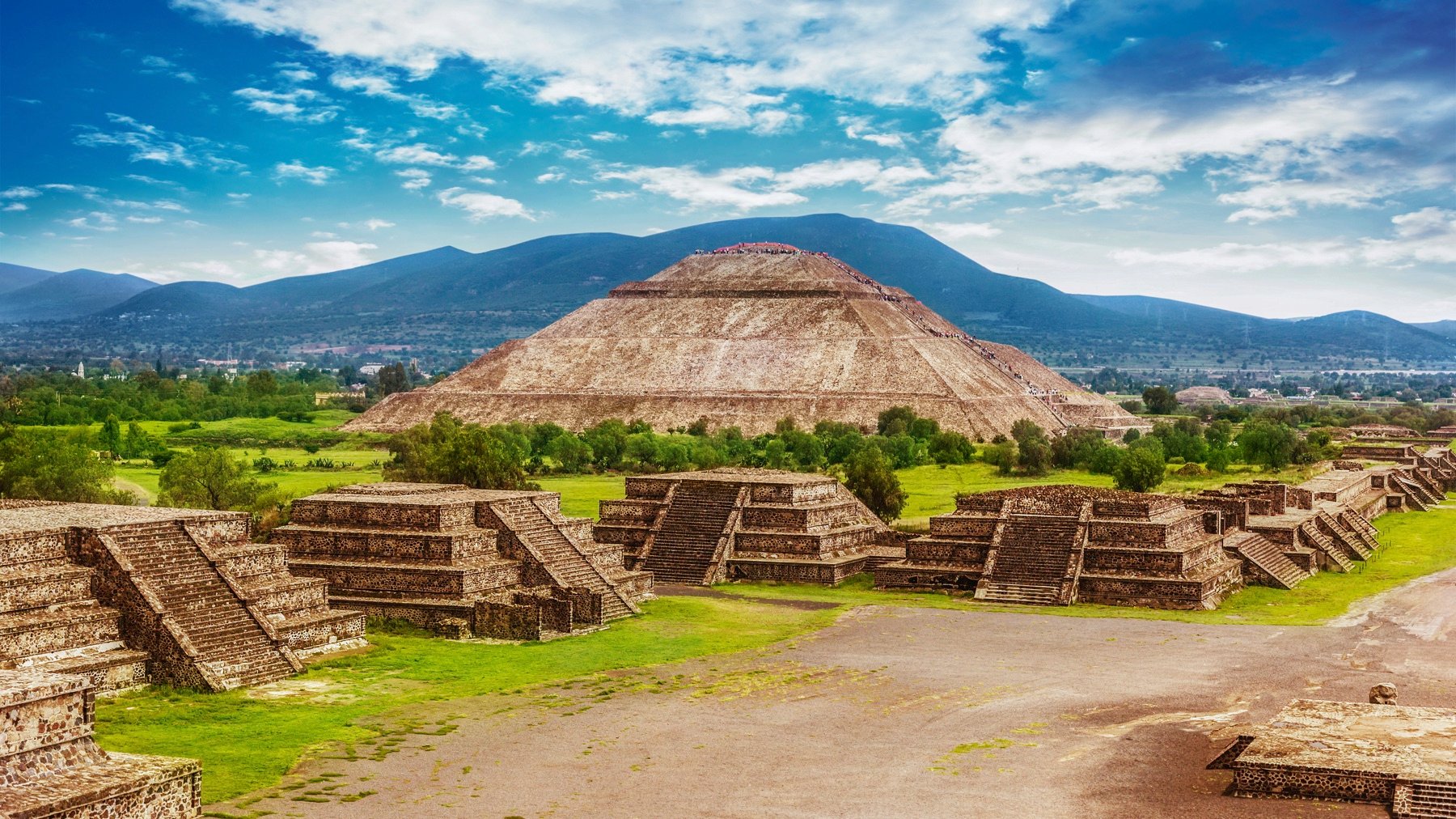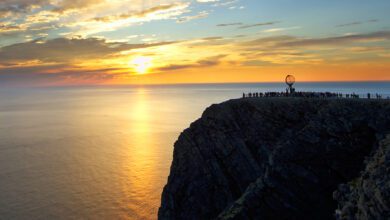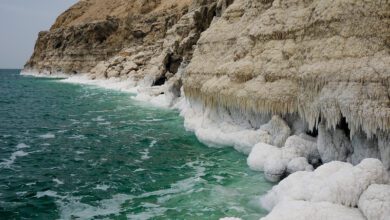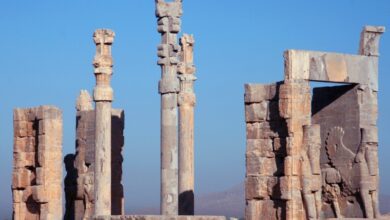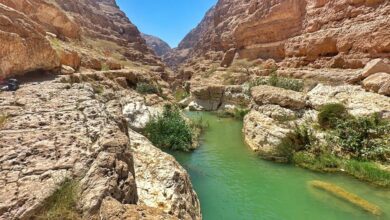
Imagine embarking on an unforgettable expedition to Mexico’s fascinating Mayan ruins. Get ready to marvel at the intricate architecture, rich history, and ancient mysteries that await you in this breathtaking adventure. From the towering pyramids of Chichen Itza to the hidden ruins of Tulum, each site unveils a unique story of the ancient Mayan civilization. Join us as we step back in time to explore these remarkable archaeological wonders, immersing ourselves in the beauty and wonder of Mexico’s rich cultural heritage.
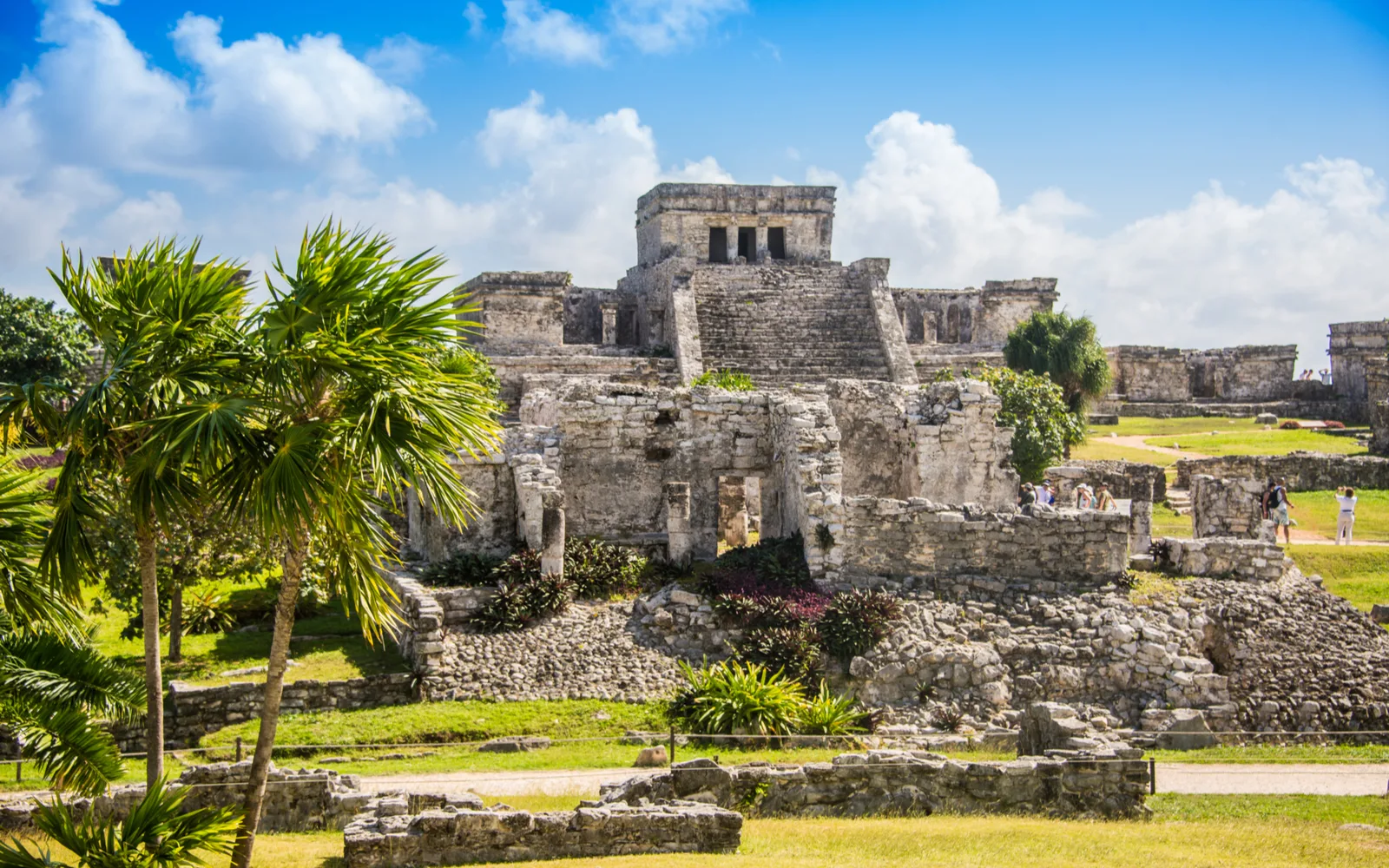
Exploring the History and Mystery of Mexico’s Mayan Ruins
Introduction to the Mayan Civilization
Welcome to the enchanting world of Mexico’s Mayan ruins, where history and mystery intertwine to captivate visitors from around the globe. The Mayan civilization, known for its remarkable achievements in architecture, astronomy, mathematics, and art, flourished in present-day Mexico and Central America from approximately 2000 BCE to 1500 CE. With their sophisticated knowledge and advanced technology, the Mayans built astounding cities with towering pyramids, intricate temples, and ornate palaces. Exploring these ancient ruins offers a unique opportunity to delve into the rich past of a fascinating civilization.
Significance and Historical Context of the Mayan Ruins
The Mayan ruins hold immense significance not only for Mexico but for the entire world. These archaeological sites provide valuable insights into the ancient Mayan culture, their beliefs, and their way of life. Through the study of Mayan ruins, historians and archaeologists have been able to piece together a comprehensive understanding of this advanced civilization. The ruins offer a glimpse into the religious practices, governance structures, social hierarchies, and artistic expressions of the Mayans. Moreover, they shed light on their astronomical knowledge, elaborate calendrical systems, and the intricate relationship between humans and their surroundings.
Overview of the Most Famous Mayan Ruins in Mexico
Mexico boasts an impressive array of Mayan ruins that span across the country, each with its own unique historical and architectural significance. Let’s take a closer look at some of the most famous Mayan ruins that are a must-visit for any history enthusiast or adventure seeker.
Preparing for the Journey
Choosing the Right Time to Visit
Before embarking on your Mayan ruins expedition, it’s crucial to consider the best time to visit. Mexico’s climate can vary significantly depending on the region, so it’s essential to plan your trip during favorable weather conditions. Generally, the dry season, which runs from November to April, is the most popular time to visit, as it offers clear skies and pleasant temperatures. However, be prepared for larger crowds during this time. Alternatively, the wet season, from May to October, offers a unique experience with lusher landscapes and fewer tourists, but it comes with the possibility of rain showers.
Researching and Planning Your Itinerary
To make the most out of your Mayan ruins expedition, thorough research and careful planning are key. Start by identifying the specific ruins you wish to visit and their proximity to one another. This will help you craft a well-rounded itinerary that maximizes your time and allows for a comprehensive exploration of the Mayan civilization. Take into account the opening hours, entrance fees, and any restrictions or special events that may impact your visit. Additionally, researching nearby accommodations, transportation options, and nearby attractions will ensure a seamless and enjoyable journey.
Understanding the Logistics of Visiting the Ruins
Visiting Mayan ruins involves more than simply showing up at the entrance gates. To fully appreciate the historical significance of these sites, it’s important to familiarize yourself with the logistics involved. Many ruins offer the services of knowledgeable local guides who can provide insightful commentary and bring the ancient city to life. Prioritize acquiring a map or guidebook, as well as audio guides if available, to enhance your understanding of the ruins. Additionally, be prepared for moderate to extensive walking, as some sites can cover vast areas with uneven terrain.
Packing Essentials for a Comfortable Expedition
When embarking on your Mayan ruins adventure, packing the right essentials can greatly enhance your comfort and overall experience. Start by ensuring you have comfortable walking shoes suitable for exploring archaeological sites. Dress in lightweight, breathable clothing to combat the heat and humidity. Sunscreen, a hat, and sunglasses are essential to protect yourself from the sun’s rays. Staying hydrated is crucial, so bring a refillable water bottle. Other essentials include insect repellent, a small first aid kit, a camera or smartphone for capturing memories, and a backpack to carry your belongings. Don’t forget to bring a sense of curiosity and wonder as you step back in time and explore these ancient wonders.
Exploring the Ruins: Must-Visit Sites
Chichén Itzá: The Majestic Wonder of the Yucatán
Chichén Itzá, located in the Yucatán Peninsula, is undoubtedly the most famous and iconic Mayan ruin in Mexico. This UNESCO World Heritage site is renowned for its well-preserved architecture, most notably the spectacular Kukulkan Pyramid, also known as El Castillo. The intricate stone carvings, astronomical alignments, and the mesmerizing play of light and shadow during the equinoxes make Chichén Itzá a truly awe-inspiring sight. Don’t miss the Temple of the Warriors, the Great Ball Court, and the Sacred Cenote, which offer further glimpses into the fascinating Mayan civilization.
Tulum: The Ancient City by the Caribbean Sea
Perched atop a cliff overlooking the turquoise waters of the Caribbean Sea, Tulum is a true gem among Mayan ruins. Once a bustling port city, Tulum offers a unique blend of archaeological wonders and breathtaking natural beauty. Explore the well-preserved structures, such as the Temple of the Frescoes and the Castle, adorned with intricate stucco decorations. Afterward, take a refreshing dip in the nearby Playa Paraiso, a stunning beach that epitomizes paradise.
Palenque: Discovering the Enigmatic Temples in the Jungle
Palenque, hidden deep in the lush jungles of Chiapas, is a mesmerizing Mayan ruin that will transport you to another world. Known for its intricately carved temples and impressive architectural design, Palenque offers a magical journey through time. The Temple of the Inscriptions, with its hieroglyphic texts and burial chamber of the esteemed ruler Pakal the Great, is a must-see. As you wander through Palenque’s temples and plazas, keep an eye out for the abundant wildlife that calls this ancient city their home.
Uxmal: Exploring the Puuc Architectural Style
Uxmal, a UNESCO World Heritage site nestled in the Puuc region, showcases the unique Puuc architectural style that sets it apart from other Mayan ruins. The intricate stone mosaics, geometric patterns, and well-preserved buildings highlight the exceptional craftsmanship of the ancient Mayans. The Pyramid of the Magician, with its rounded sides and steep staircase, stands as a testament to the engineering prowess of the Mayan civilization. Explore the Governor’s Palace, the Nunnery Quadrangle, and the Ball Court to gain a deeper understanding of Uxmal’s significance in Mayan history.
Teotihuacán: The City of the Gods
Just a short drive from Mexico City lies Teotihuacán, an ancient city that once served as the cultural and religious epicenter of the region. As you walk along the Avenue of the Dead, flanked by impressive pyramids and ancient buildings, you will feel the magnitude and grandeur of this ancient metropolis. The Pyramid of the Sun and the Pyramid of the Moon stand as towering testaments to the architectural prowess of the Teotihuacán civilization. Climb to the top of these magnificent structures for a panoramic view that will leave you in awe of the city’s splendor.
Coba: Climbing the Nohoch Mul Pyramid
Coba, nestled amidst the lush foliage of the Yucatán Peninsula, offers a unique opportunity to explore the ruins while immersing yourself in the wonders of nature. The highlight of Coba is the Nohoch Mul Pyramid, one of the tallest pyramids in the Mayan world. Ascend the pyramid’s steep steps and be rewarded with a breathtaking view of the surrounding jungle. Don’t forget to explore the interconnected network of sacbes (ancient white roads) that once connected Coba to other Mayan cities, providing a glimpse into their sophisticated transportation system.
Ek Balam: Unveiling the Acropolis and Stucco Ornaments
While not as well-known as some of the larger Mayan sites, Ek Balam in the Yucatán Peninsula offers an incredibly well-preserved ruin that exudes an air of mystery and discovery. As you enter through the grand entrance, you will be greeted by the majestic Acropolis, adorned with intricate stucco ornaments depicting mythical creatures and deities. Climb to the top of the Acropolis for a stunning panoramic view of the surrounding jungle and the opportunity to better understand the significance of Ek Balam within the Mayan world.
Calakmul: Venturing into the Remote Ruins of the Maya World
For those seeking a more off-the-beaten-path adventure, Calakmul in the state of Campeche offers a truly remote and awe-inspiring Mayan ruin experience. Located in the heart of the Calakmul Biosphere Reserve, this UNESCO World Heritage site is surrounded by dense jungle, home to a rich variety of flora and fauna. The towering structures, including the massive Structure II pyramid, rise above the canopy, offering a glimpse into the power and influence of the Mayan civilization that once thrived here.
Monte Albán: The Ancient Capital of the Zapotec Civilization
While not technically a Mayan ruin, Monte Albán holds great historical and cultural significance as the ancient capital of the Zapotec civilization. Situated atop a mountainous plateau overlooking the Oaxaca Valley, Monte Albán boasts impressive pyramids, temples, and tombs, all meticulously crafted by the Zapotec people. Explore the Great Plaza, the Ball Court, and the Palace to gain insights into the Zapotec society’s political, religious, and economic structures. The panoramic views of the valley from Monte Albán are simply breathtaking, adding another layer of wonder to this extraordinary archaeological site.
Yaxchilán: A Hidden Gem along the Usumacinta River
Tucked away deep in the jungles of Chiapas, Yaxchilán remains one of the most secluded and mysterious Mayan ruins. Accessible only by boat through the Usumacinta River, this site offers a truly adventure-filled journey to an ancient city shrouded in dense foliage. Exploring Yaxchilán allows you to admire the remarkable stone carvings that decorate the temples, conveying the stories of the ruling elite and their interactions with neighboring cities. Immerse yourself in the mystical atmosphere of Yaxchilán and marvel at the ancient treasures hidden within its walls.
Understanding Mayan Culture and Civilization
Deep Dive into Mayan Cosmology and Beliefs
To truly appreciate the Mayan ruins, it is essential to delve into the cosmology and beliefs that shaped the Mayan civilization. The Mayans possessed a deep understanding of the cosmos, and their cosmological beliefs influenced everything from architecture to agricultural practices. Their complex pantheon of gods and goddesses, each associated with different aspects of life, reveal their religious worldview. The Popol Vuh, the sacred Mayan book of creation, offers valuable insights into their origin stories and spiritual traditions. By exploring the intricate interplay between religion, astronomy, and daily life, you will gain a greater appreciation for the Mayan civilization’s depth and complexity.
Exploring Mayan Art, Architecture, and Hieroglyphs
One of the defining features of the Mayan civilization is its remarkable artistic and architectural achievements. The intricate stone carvings and stucco decorations found on the facades of Mayan temples and palaces are a testament to the Mayans’ extraordinary craftsmanship. By studying the hieroglyphic inscriptions found within the ruins, researchers have been able to decipher and understand the Mayan writing system. Dive into the world of Mayan art, decipher the hieroglyphs, and uncover the symbolic representations that offer a glimpse into the Mayan world and their rich visual language.
Unraveling the Mayan Calendar and Astronomical Knowledge
The Mayan calendar is an enduring symbol of their advanced astronomical knowledge and mathematical prowess. The intricate system of calendars, including the Long Count, Haab, and Tzolk’in calendars, allowed the Mayans to track time, agricultural cycles, and celestial events with extraordinary precision. While the end of the Mayan calendar in 2012 captured popular imagination, it is important to understand the calendar’s significance in the Mayan cosmology and not as a prophecy of doom. Delve into the fascinating Mayan calendar system, explore their astronomical knowledge, and appreciate the intricate relationship they had with the celestial bodies.
Insights into Mayan Society, Governance, and Daily Life
By studying Mayan ruins, historians have gained valuable insights into the social, political, and economic structures of the Mayan civilization. The ruins give us a glimpse into the hierarchical society, where rulers and the elite held significant power and influence. The extensive agricultural terraces, canal systems, and trade routes reveal the sophistication of their agricultural and economic practices. By exploring the ruins, you can gain a deeper understanding of the daily lives of the Mayan people, their social customs, and their governance systems that have shaped their civilization.
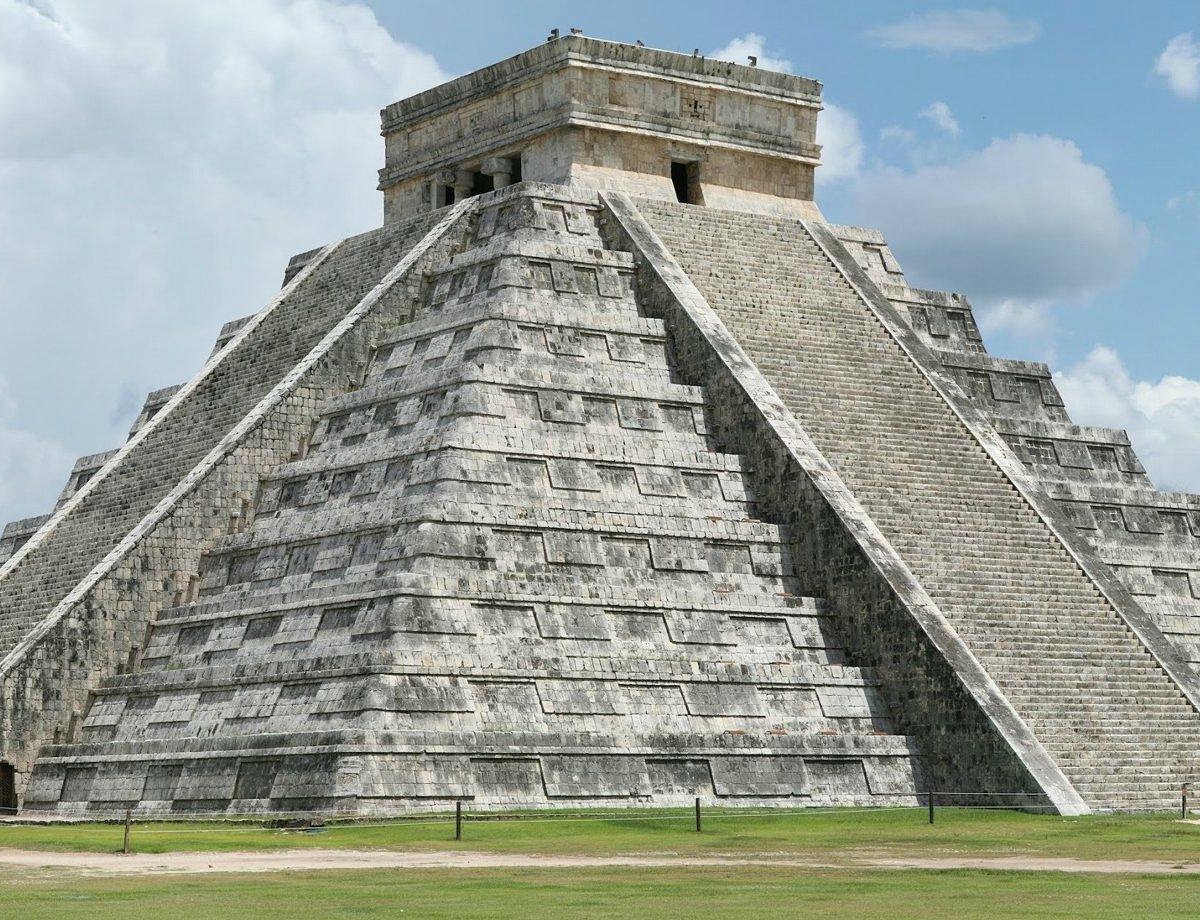
Guided Tours and Local Experts
Benefits of Joining a Guided Tour
Embarking on a guided tour of the Mayan ruins offers numerous advantages, particularly for those seeking a more in-depth and immersive experience. Knowledgeable guides can provide historical context, cultural insights, and captivating stories that bring the ancient ruins to life. They can also navigate the often complex logistics involved in visiting the sites, ensuring a hassle-free and enriching exploration. Additionally, joining a guided tour allows you to meet fellow travelers, share experiences, and forge lasting connections with like-minded individuals passionate about history and adventure.
Finding Reputable Tour Operators and Local Guides
Choosing the right tour operator or local guide is crucial to ensuring a safe, informative, and enjoyable Mayan ruins expedition. Look for reputable tour operators with a track record of positive reviews and a commitment to sustainable tourism. Local guides who are well-versed in the history, culture, and significance of the ruins can provide invaluable insights and enhance your overall experience. Research their credentials, certifications, and affiliations to ensure you are in capable hands, and don’t hesitate to ask for recommendations from fellow travelers or online forums dedicated to archaeological tourism.
Customizing Your Tour Experience
While many guided tours offer comprehensive itineraries, it is possible to customize your experience to suit your specific interests and preferences. If there are particular ruins, temples, or aspects of Mayan history that you are especially drawn to, communicate your desires with your tour operator or guide. They can help tailor the itinerary to include the sites and activities that will resonate most with you. Whether you wish to delve deeper into Mayan cosmology, focus on architectural details, or explore the ruins through a particular lens, customizing your tour allows for a more personalized and fulfilling experience.
Preservation Efforts and Threats to Mayan Ruins
UNESCO World Heritage Sites: Protecting the Mayan Legacy
Recognizing the exceptional universal value of Mexico’s Mayan ruins, several sites have been designated as UNESCO World Heritage sites. This designation brings attention to their importance, encourages responsible tourism, and provides much-needed support for their conservation and preservation. The UNESCO World Heritage status highlights the need to protect these ancient treasures for future generations and ensures that sustainable practices are implemented to mitigate potential threats. By respecting the rules and regulations set forth by UNESCO, visitors can actively contribute to the preservation of the Mayan ruins.
Issues of Conservation and Restoration
Conserving and restoring Mayan ruins present unique challenges due to their age, exposure to the elements, and the delicate balance between preservation and accessibility. Conservation efforts aim to stabilize the ruins, protect them from deterioration, and maintain their historical integrity. Restoration projects carefully reconstruct damaged or collapsed structures to provide an accurate representation of the site’s original appearance. However, restoration must be approached cautiously, balancing the need to preserve the ruins with maintaining their authenticity. By supporting reputable organizations and projects dedicated to conservation and restoration, visitors can contribute to the long-term preservation of these historical treasures.
Tourism Impact and Sustainable Practices
As the popularity of Mayan ruins as tourist destinations continues to rise, it is imperative to manage tourism’s impact on the sites and their surrounding ecosystems. Responsible, sustainable tourism practices are essential to minimize environmental degradation, preserve cultural heritage, and foster positive interactions between visitors and local communities. Practicing Leave No Trace principles, respecting site regulations, and supporting local businesses and artisans are some of the ways visitors can contribute to sustainable tourism. By treading lightly and promoting responsible travel, we can mitigate the negative impacts of tourism and ensure the preservation of the Mayan ruins for future generations.
Risks of Looting and Archaeological Plunder
Mayan ruins are not only vulnerable to natural decay but also face risks from looting and archaeological plunder. Illicit trade in Mayan artifacts, particularly valuable and rare pieces, poses a significant threat to the integrity and value of the ruins. These illegal activities can lead to irreparable damage to the sites and the loss of invaluable historical and cultural artifacts. Governments, organizations, and individuals must work together to combat looting and protect the Mayan legacy. By supporting initiatives aimed at preventing and prosecuting illegal trade, visitors can contribute to safeguarding the ruins and preserving their historical significance.
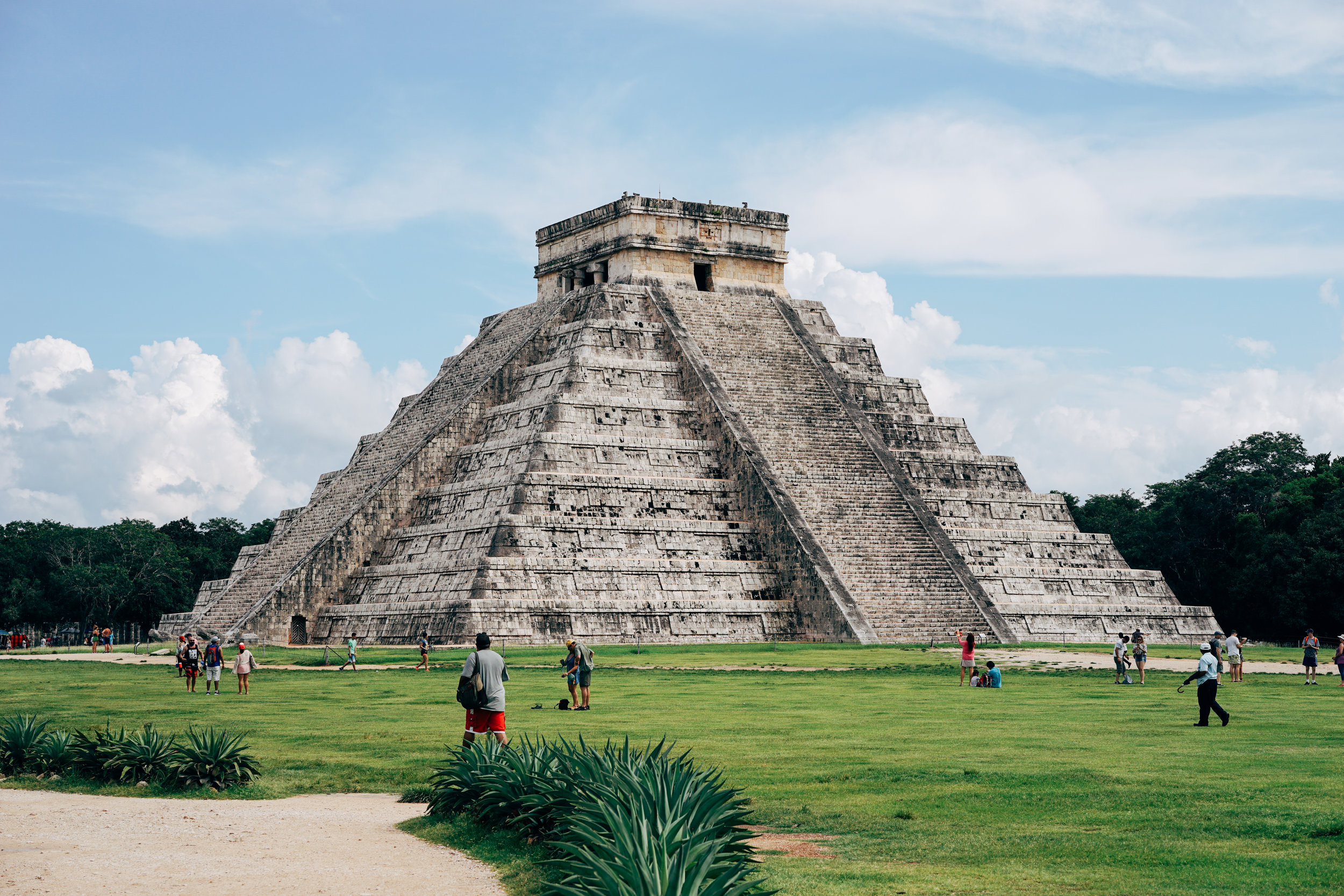
Practical Tips for an Unforgettable Expedition
Respecting the Ruins: Do’s and Don’ts
When visiting Mayan ruins, it is vital to show the utmost respect for these historical sites. This includes adhering to the rules and regulations set by the site authorities, such as not climbing on restricted structures, avoiding touching or removing artifacts, and refraining from defacing or littering the ruins. Respecting the ruins also encompasses practicing mindful photography, refraining from flying drones, and observing quiet and reflective behavior. By treating the ruins with reverence and preserving their integrity, visitors can ensure that future generations can continue to marvel at these exceptional treasures.
Safety Precautions and Health Considerations
While Mayan ruins offer a captivating adventure, it is crucial to prioritize safety and health during your expedition. Carry a basic first aid kit and any necessary medications, as medical facilities may be limited in remote locations. Stay hydrated by drinking plenty of water and seek shade or rest in cooler areas to prevent overheating. Apply sunscreen regularly and wear protective clothing to shield yourself from the sun’s rays. Additionally, be cautious of uneven terrain, particularly when climbing or descending steep steps on the pyramid structures. By prioritizing safety and taking necessary precautions, you can ensure a safe and enjoyable visit to the Mayan ruins.
Engaging with the Local Communities and Indigenous Cultures
Beyond the ruins, Mexico’s local communities and indigenous cultures offer a unique opportunity to immerse yourself in the vibrant tapestry of the region’s history and heritage. Engage with the locals, visit nearby markets, and support local artisans and businesses. Take the time to learn about their traditions, crafts, and way of life, fostering a deeper connection to the land and its people. By engaging respectfully and responsibly with the local communities, you contribute to the preservation and promotion of their cultural identity and the sustainable development of the region.
Learning Basic Mayan Phrases and Customs
Immerse yourself in the Mayan experience by learning a few basic phrases and customs. Greeting the locals with a friendly “Buenos días” (Good morning), “Por favor” (Please), and “Gracias” (Thank you) can go a long way in establishing positive interactions. Taking the time to learn about common customs, such as the correct way to greet someone or engage in conversation, demonstrates cultural sensitivity and respect. Initiating conversations with locals about their customs, traditions, and history can lead to meaningful exchanges and a deeper appreciation for the Mayan culture.
Beyond the Ruins: Exploring Mexico’s Natural Wonders
Cenotes: Magical Underground Sinkholes
Mexico’s cenotes, natural sinkholes formed by collapsed limestone bedrock, offer an otherworldly experience that complements any Mayan ruins expedition. These crystal-clear pools, often hidden beneath lush vegetation, are believed to be sacred by the Mayan people. Dive into the depths of these freshwater pools, snorkel among stalactites, or simply marvel at the natural beauty that surrounds you. Cenotes provide a welcome respite from the heat and a chance to cool off while connecting with the region’s natural wonders.
Sian Ka’an Biosphere Reserve: A Paradise of Biodiversity
For nature enthusiasts and wildlife lovers, a visit to the Sian Ka’an Biosphere Reserve is a must. This UNESCO World Heritage site encompasses a vast stretch of the Yucatán Peninsula, offering a diverse range of ecosystems, including mangroves, coral reefs, lagoons, and tropical forests. Explore its remarkable biodiversity by kayaking through the pristine waters, snorkeling alongside colorful marine life, or observing the myriad bird species that call this biosphere reserve home. A visit to Sian Ka’an is an opportunity to witness firsthand the interconnectedness between the natural world and the ancient Mayan civilization.
Sumidero Canyon: A Spectacular Gorge in Chiapas
Located in the southern state of Chiapas, the Sumidero Canyon is a breathtaking natural wonder that complements a Mayan ruins expedition. Towering cliffs and lush vegetation frame the Grijalva River as it carves through the dramatic gorge, creating a landscape of unparalleled beauty. Taking a boat tour along the river allows you to fully appreciate the magnitude of the canyon while spotting wildlife such as crocodiles, monkeys, and a variety of bird species. The Sumidero Canyon offers a serene escape into nature, providing further insight into the diverse landscapes that have shaped Mexico’s rich cultural heritage.
Pico de Orizaba: Conquering Mexico’s Highest Peak
For adventure enthusiasts seeking a challenge, summiting Pico de Orizaba, Mexico’s highest volcano and third highest peak, offers a thrilling experience. Located in the eastern state of Veracruz, Pico de Orizaba stands at a staggering 5,636 meters (18,491 feet). Ascending this dormant volcano requires technical mountaineering skills and acclimatization to the high altitude. The rewarding panoramic views from the summit, reaching as far as the Gulf of Mexico on a clear day, make the arduous journey worthwhile. Conquering Pico de Orizaba showcases the diverse natural beauty that Mexico has to offer, beyond its Mayan ruins.
Isla Mujeres: An Idyllic Island Retreat
After immersing yourself in the history and adventure of the Mayan ruins, a visit to Isla Mujeres offers a tranquil and picturesque getaway. Located off the coast of Cancún, this charming island boasts pristine beaches, crystal-clear waters, and a laid-back atmosphere. Spend your days snorkeling among colorful coral reefs, swimming with gentle whale sharks, or exploring the quaint streets of the island’s vibrant town. From breathtaking sunsets to delicious seafood, Isla Mujeres provides the perfect balance of relaxation and exploration, making it an idyllic end to your Mayan expedition.
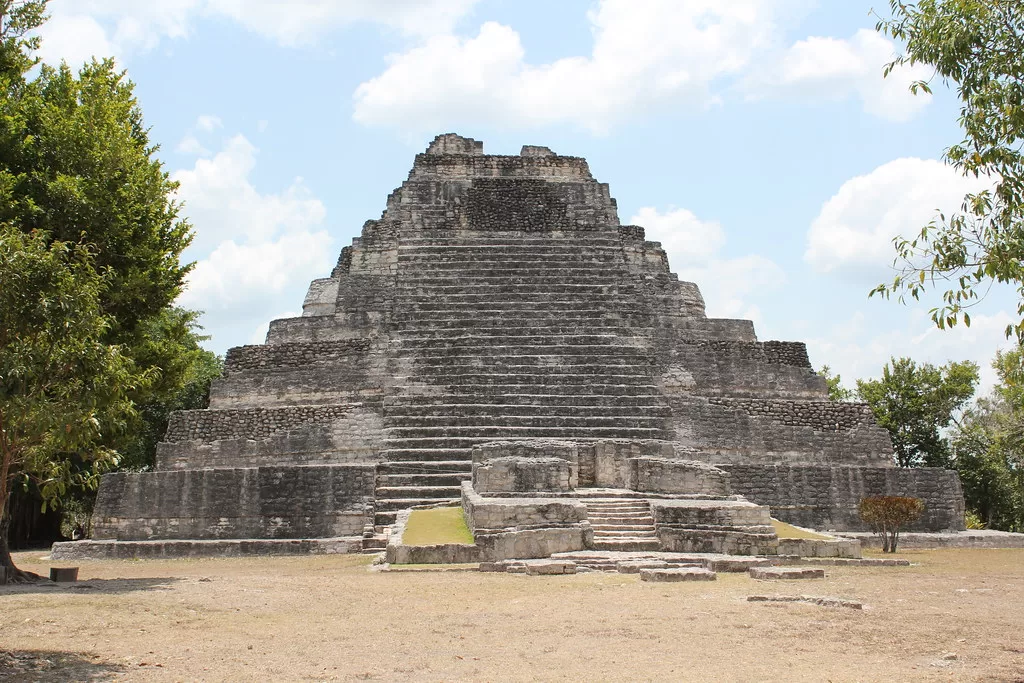
Capture the Essence: Photography Tips
Mastering the Art of Photographing Ancient Ruins
Photographing Mayan ruins presents a unique opportunity to capture the essence of these awe-inspiring relics. Start by exploring different angles, perspectives, and compositions to showcase the grandeur and intricate details of the ruins. The use of wide-angle lenses can help capture the vastness of the sites, while macro lenses can highlight the fine craftmanship of stone carvings and stucco decorations. Experiment with light and shadows, especially during sunrise and sunset, to add depth and drama to your photographs. Above all, endeavor to convey the sense of wonder and reverence you feel when standing in the presence of these ancient wonders.
Lighting Techniques for Capturing the Best Shots
Lighting plays a crucial role in photographing Mayan ruins, as it can enhance the textures, patterns, and architectural details. Take advantage of the soft, diffused light during the early morning or late afternoon to capture images with warm tones and gentle shadows. Consider utilizing HDR (High Dynamic Range) techniques to capture the full range of lights and darks in scenes with high contrast. Experiment with long exposures during the blue hour to create dreamy, ethereal images of the ruins under the night sky. By understanding the impact of lighting and utilizing various techniques, you can create visually stunning photographs that evoke the timeless beauty of the Mayan civilization.
Preserving Memories Ethically and Responsibly
When photographing Mayan ruins, it is essential to do so ethically and responsibly. Respect the rules and regulations set by the site authorities regarding photography, and avoid using flash in areas where it is prohibited to prevent any potential damage to delicate structures or artifacts. Be mindful of the impact of photography on both the ruins and fellow visitors by staying considerate and aware of your surroundings. Remember that the true essence of a Mayan ruins expedition lies not just in capturing memorable photographs but also in cultivating a deep appreciation for the history, culture, and legacy of the ancient Mayan civilization.
Editing and Showcasing Your Mayan Ruins Photography
Once you have captured the essence of the Mayan ruins through your photographs, it’s time to bring them to life through editing and showcasing. Start by selecting your best shots and arranging them in a cohesive narrative that tells the story of your expedition. Use photo editing software to enhance the colors, contrast, and sharpness while maintaining the authenticity of the scenes. Consider creating a digital or physical photo album, accompanied by captions or a narrative, to showcase your Mayan ruins photography. Sharing your photographs with others can inspire and encourage them to embark on their own transformative Mayan expedition.
Conclusion: A Journey Through Time
Reflecting on the Immense Historical Legacy
Embarking on a journey through Mexico’s Mayan ruins offers a profound perspective on the immense historical legacy left by this advanced civilization. Standing amidst the ancient structures, it becomes clear just how significant the Mayans’ contributions to architecture, astronomy, mathematics, and art truly were. The ruins serve as a testament to their ingenuity, creativity, and spiritual beliefs, leaving visitors in awe of their remarkable achievements.
Personal Insights and Transformative Experiences
Exploring the Mayan ruins is not just a journey through history, but also a transformative experience on a personal level. It is an opportunity to connect with an ancient civilization that thrived centuries ago and to gain a deeper understanding of our shared humanity. Walking in the footsteps of the Mayan people allows us to reflect on the passage of time, the fragility of civilizations, and the enduring power of human ingenuity.
Encouraging Others to Embark on Their Own Mayan Expedition
As you conclude your Mayan ruins expedition, you become an ambassador for the awe-inspiring wonders you have encountered. Share your experiences, photographs, and stories with others, and encourage them to embark on their own journey through Mexico’s Mayan ruins. Through education, appreciation, and responsible tourism, we can ensure the preservation of these remarkable treasures and continue to marvel at the history and mystery they hold. May your journey inspire others to immerse themselves in the wonders of the Mayan civilization, fostering a deeper connection to our shared human heritage.
